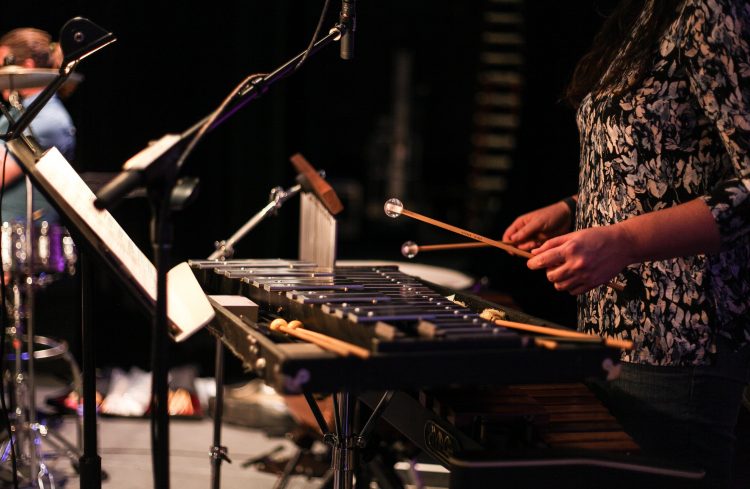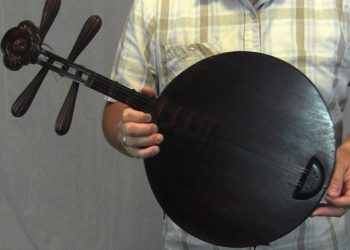When it comes to musical instruments, there are many that are well-known and widely played, such as the guitar, piano, and drums. However, there are also lesser-known instruments that can produce unique and captivating sounds. Among these is a group of instruments that all share a common trait: their names start with the letter “X.” While some of these instruments may not be as popular as others, they each have their own distinctive characteristics that make them worth exploring. In this article, we will explore the top 7 musical instruments that start with the letter X, from the familiar to the obscure. We’ll delve into the history, construction, and sound of each instrument, as well as the genres of music in which they are commonly used. Whether you’re a music enthusiast looking to expand your knowledge or a musician looking for a new challenge, this article is sure to introduce you to some fascinating instruments you may not have heard of before. So let’s dive into the world of X-named instruments and discover what makes them so special.
1. Xalam
Xalam, also known as the West African lute, is a stringed instrument used for centuries in many parts of Africa. It’s played by plucking or strumming its strings with either bare hands or plectrums. The body of the xalam can be made from different materials such as wood, leather, and animal hide. Traditionally, it had four to five strings but modern versions often have six or seven strings.
The sound of the xalam is beautiful and versatile; it creates music that ranges from lively dance tunes to slow lullabies and spiritual songs. This musical versatility makes it popular among traditional musicians and modern audiences alike. Its unique tonal qualities are also ideal for use as an accompanying instrument in folkloric performances or as part of larger ensembles.
The history of this fascinating instrument dates back hundreds of years when it was first developed by the Soninke people who lived along what is now present-day Senegal, Mauritania, Guinea-Bissau, Gambia and Mali. Today, it remains a crucial element in various genres including mbalax, griot music and Gumbé which originated in these same regions during their respective eras of independence.
No matter where you find yourself on the continent today – whether at a village party or a city nightclub – chances are you will hear the enchanting sounds of the xalam being played!
2. Xaphoon
The xaphoon, often referred to as the ‘Hawaiian nose flute’, is another important instrument of African music. It’s recognizable by its unique shape: a small tube with two holes for fingers and one hole for blowing into. The sound produced from this simple construction can be surprisingly rich and complex.
Its origin is unknown but it’s believed that it first appeared in West Africa during the 19th century, where it spread quickly throughout various regions including Senegal, Gambia and Guinea-Bissau. Over time, variations of the xaphoon have been adopted in other parts of the continent such as Ethiopia and Madagascar.
Unlike many traditional instruments, the xaphoon requires no tuning or maintenance; all you need are your hands and breath! In fact, due to its portability and ease of use, it has become popular amongst contemporary musicians who often perform solo or incorporate it into larger ensembles. Its versatility allows for an almost endless range of musical styles – from lighthearted melodies to deep soulful grooves – making it suitable for any occasion.
The popularity of the xaphoon continues to grow today both within Africa and beyond its borders due its charm and playfulness. From street performances in cities like Dakar to global festivals held around the world – there’s really something special about hearing someone performing on this beautiful little instrument!
3. Xiao
Moving on from the xaphoon, let’s take a look at another African musical instrument – the xiao. This ancient flute is believed to have originated in China before being brought over by traders and adapted by local cultures across Africa. It has since become an integral part of many traditional ceremonies and celebrations.
The construction of this instrument is very simple; it consists of two bamboo pipes connected together with wax or string which creates a gentle whistle-like sound when blown into. Despite its simplicity, this wind instrument can be used to create beautiful melodies that will fill any room with joy. In addition to its pleasant tone, one of the defining features of the xiao is its portability – making it ideal for anyone who loves playing music outside!
Beyond its ceremonial purpose, the xiao can also be heard accompanying modern styles such as jazz and rock. Its unique sound adds texture and depth to any ensemble whilst providing an extra layer of rhythm too. Plus, thanks to its ease of use, even complete beginners can pick up this instrument quickly – allowing them access to some truly extraordinary sounds without having to learn complicated techniques first.
This traditional Chinese flute continues to provide us with endless possibilities today; whether you want something soothing or upbeat there’s sure to be something here that suits your needs perfectly. So why not give it a go? With just a little practice you could find yourself creating magical melodies in no time!
4. Xitende
The xitende is another traditional Chinese instrument that’s definitely worth exploring. This two-stringed bowed lute has a mellow and pleasant sound which can add depth to any kind of performance. It’s also incredibly easy to learn how to play, as it requires only basic techniques and minimal practice time in order to master its use.
One of the advantages of the xitende is that you don’t need extra tools such as bows or picks for playing this instrument – all you need are your hands! Additionally, because it produces a soft yet distinct tone, it works well with many instruments and vocalists alike – making it an excellent choice for accompaniment pieces. If you’re looking for something unique but still relatively simple to pick up, then this could be just what you need.
In addition to being versatile, the xitende also gives musicians plenty of creative freedom when performing their music; since each string can be tuned differently, players have unlimited possibilities when creating melodies and harmonies. Furthermore, because the strings are made from gut or steel wire, they provide more control over articulation than other types of strings – allowing performers to express themselves better through their playing.
The xitende is a great tool for anyone looking to explore different musical styles and create beautiful sounds on their own terms. So why not give it a go? You never know what wonderful tunes might come out of this lovely instrument!
5. Xun
Continuing our exploration of traditional Chinese instruments, let’s take a look at the xun. This vessel flute is also known as an ocarina and is one of the oldest instruments in China – dating back to 3,000 years ago! It’s made from a clay or ceramic body which produces sounds by blowing air into it through finger holes. Unlike other wind instruments, there are no metal parts on this instrument so you can easily move around with it wherever you go.
The xun has long been associated with healing rituals and spiritual ceremonies due to its soothing tones. Its sound is surprisingly versatile; depending on how much breath pressure you give it, you can create anything from soft whispery notes to loud booming ones. As such, many people enjoy playing this instrument for relaxation purposes. Furthermore, because of its size and portability, you can easily add some unique flourishes to your performances without having to lug around heavy equipment.
What sets the xun apart from other wind instruments is that it requires skillful manipulation in order to produce quality sound; unlike others where just pressing down keys will do the trick here musicians must truly master their technique if they want great results. But while mastering may take time, once achieved players have access to an incredibly diverse range of musical expressions – all within one small instrument!
For those looking for something off-the-beaten track yet still relatively easy to learn then the xun could be well worth trying out. With practice and dedication comes beautiful music – who knows what kind of melodies await?
6. Xylophone
Moving on from the xun, let’s take a look at another traditional Chinese instrument: the xylophone. This percussion instrument is made up of wooden bars which are hit with mallets to create sound – and it’s been around since the 16th century! The unique thing about this instrument is that each bar produces a different tone; when combined together they create beautiful melodies.
This versatility makes the xylophone incredibly popular among many musicians, as it can be used in both solo performances or ensembles alike. Furthermore, its size means you can easily transport it around for live shows without having to worry about lugging heavy equipment. As such, it’s no surprise why so many people enjoy playing this instrument – whether for leisure or professional purposes.
However, mastering the xylophone takes time and discipline – unlike other instruments where pressing down keys will do the trick here players need to learn how to strike each bar accurately in order to produce quality sounds. Once achieved though, users have access to an array of musical expressions all within one small yet powerful instrument.
The difficulty level may put some off but those who persevere will find themselves rewarded with beautifully crafted music worthy of any stage show – afterall practice does make perfect! Who knows what kind of tunes await?
7. Xylorimba
Building on the concept of a xylophone, the xylorimba is an instrument which takes this traditional Chinese percussion to a whole new level. This larger than life variant features bass and soprano tones along with full octaves – making it an incredibly versatile instrument capable of producing deep, rich soundscapes. It’s no wonder why so many musicians are drawn to its unique capabilities!
The xylorimba also stands out for its distinct design; unlike other instruments which tend to have flat surfaces or sleek curves, this one has raised bars that create grooves when struck together – adding a visually captivating element to performances too. Plus, thanks to its size you can easily add amplification devices if needed – giving your music extra punch in live settings.
However just like any other instrument playing the xylorimba requires practice and dedication in order to get the best results – but once mastered users will be able to produce dynamic compositions sure to amaze audiences. From emotional ballads right through to exciting toe-tapping rhythms there’s something here for everyone – ensuring hours of musical exploration awaits those who take up this incredible instrument.
With such impressive capabilities at their fingertips aspiring musicians should look no further than the xylorimba for their next project – especially if they’re seeking something truly special! Who knows what kind of masterpieces await?










